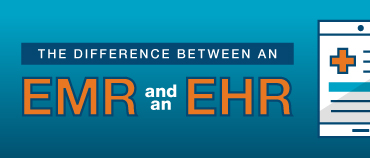Prior to 2020, few care providers would have classified telehealth as a key component of their growth strategy or focused much attention on the technology that supports it. With the onset of the pandemic in 2020, telehealth visits increased from 840,000 in 2019 to 52.7 million, according to the American Medical Association. As the pandemic subsided, telehealth usage declined, but it still remains far above pre-pandemic levels.
What began as a quick pivot that needed to happen in 2020 to continue delivering care and services has become an increasingly important offering. Studies done on patient satisfaction point to the convenience and accessibility of care as key drivers. These results go across all age groups, with patients aged 18-44 having the highest usage and satisfaction scores.
As virtual has become a more permanent delivery model for operations and providers, the need for an integrated healthcare virtual provider experience has been elevated. At Netsmart, we’ve continued to innovate our telehealth solution to provide ease of use for consumers and a fully integrated experience for the providers.
Journey to virtual care
Throughout last year, we met with a number of our clients to review market and technology strategy. During these sessions, we validated our strategies to ensure we are on the right track with our solution and market approach. We also learned that, despite the increased focus on virtual care, provider organizations are at different stages of their virtual care journey.
In fact, the provider journey to effectively include telehealth as a core component of care delivery was not that different from our own efforts at evolving our telehealth technology strategy. We noted that consumers were using mobile applications to access their virtual sessions. Providers were leveraging standalone applications with fairly basic functionality to administer and manage their virtual services.
Given the sustained volume and increasing importance of virtual care, standalone solutions would not be sufficient to elevate virtual care to the status of a core care delivery method, much less a preferred method. We quickly realized simplicity is the key to consumer adoption, and deep integration into the electronic health record (EHR) was essential for provider efficiencies and satisfaction.
On the consumer side, individuals receive a text or email notification of their telehealth visit with another reminder and the encrypted UR link is delivered right before the session. It’s simple, quick and easy because there is no application or registration required. They just click a link, run a tech check and they drop into the provider’s waiting room.
For providers, our focus on integration means they can schedule all their appointments – virtual and in-person – on a single calendar within the EHR. They also stay within the EHR for the virtual visit with all documentation, billing and reporting occurring within the clinical record. This model supports organizational best practices and drives efficiency within a hybrid delivery model.
The consumerization of healthcare
We’re also seeing telehealth and consumer engagement strategies merge through a single digital experience for consumers, providers and caregivers. Consumers are looking for greater access to services and taking stronger ownership in their care through digital tools such as targeted education, activity tracking, telehealth and health status monitoring. The result is driving a higher quality of care with better health outcomes because providers are delivering the right services at the right time in the right way for the right person.
Other strategies are focusing on remote patient monitoring to provide near real-time insights to how individuals are doing at home and alert providers when they need to intervene. That intervention could include a remote telehealth session to mitigate risk of emergency department use, but it may also come in the form of templated messages on a prescribed cadence and automated responses based on the action or inaction of the consumer.
This model is not limited to just capturing biometric vitals. It also can help determine how well an individual is managing their depression or adhering to a medication. By accurately assessing risk, a provider can intervene with a virtual session before an acute issue occurs. We are seeing organizations combining consumer engagement strategies and telehealth to address both provider shortages and provider satisfaction as well as drive better outcomes through engagement and connectedness to consumers between appointments.
Enabling your virtual care strategy
The most impactful piece of a virtual care strategy is not just the technology itself, but rather the organization’s cultural shift and buy-in to a new way of engaging individuals in a technology-based medium. At Netsmart, we see technology being adopted across communities and healthcare service lines. Organizations are offering a digital-based experience to engage healthcare consumers.
A good example is the virtual walk-in visit that expands the use of telehealth to create a virtual front door. Through that front door, consumers can request access to a provider on demand. This could take place based in a crisis situation or through another agency, such as law enforcement or school, seeking help for an individual. On the provider side, the virtual front desk includes the ability to triage, route and follow up on care virtually.
It’s also important to understand that the misconceptions of consumers not being technologically savvy enough to support virtual healthcare have been disproved. Findings from a Deloitte study found that 86 percent of all Medicaid beneficiaries possess a smart phone. We are seeing a high level of adoption of telehealth across a large cross section of programs and acuity levels as well as demographics.
Telehealth value for providers
Leveraging integrated telehealth helps drive improved revenue cycle management and cash collections. Telehealth can be used to supplement missed in-person appointments with virtual visits to improve client retention.
Additionally, providing an integrated virtual experience allows for seamless care transitions and care navigation throughout the consumer’s treatment journey. Outreach in New York has taken a human-centered design that has resulted in increased participation in telehealth visits and saves significant time for clinicians with integrated documentation.
Organizations can play offense in embracing virtual strategies that address the dual workforce challenges of provider shortages and provider satisfaction without affecting the quality of care.
Future of virtual care
It’s exciting to see virtual care technology leveraged to provide access to care in new and innovative ways. These trends will continue to see advancements with Artificial Intelligence in virtual care to drive provider efficiencies, consumer satisfaction, improved outcomes and reimbursement. For example, ambient listening technology can be used as a digital scribe with a virtual care solution to drive note dictation from a telehealth session with integration into the clinical record. These innovations not only save providers time, they create an environment in which the focus of the session is on the conversation, instead of dictating notes.
Telehealth is poised to take the next leap forward. It’s time to think about where you are on the journey to virtual care, where you want to go and how you’re going to get there. Because it’s not just about implementing more technology. It’s about changing your organization’s mindset from a transactional, scheduled appointment model to an intelligent, multi-use engagement platform that drives your organization forward and creates an environment that is innovative, efficient and welcoming to your providers and consumers.
Learn more about the Netsmart Telehealth Solution.
About the Author
AJ Peterson, Senior Vice President and General Manager, CareGuidance
AJ Peterson has served as senior vice president and general manager of CareGuidance for Netsmart for 10 years. He maintains an efficient, client-focused model around connectivity, consumer-engagement technologies, virtual care, analytics, population health management and develops value-based connections among clients, suppliers and partners in the healthcare market. Prior to joining Netsmart, AJ was an area operations director at Concentra Medical Centers. In this role, he managed medical outpatient facility operations, sales development, customer relationships and personnel development. A participant in the Office of the National Coordinator’s Data Segmentation for Privacy project, he has also served on the Advisory Council for Carequality, which provides a national-level, consensus-built, common interoperability framework to enable exchange between and among health data sharing networks.







.jpg)
